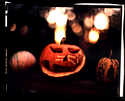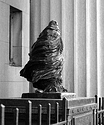but that does not account for the density of the base plus fog. Measure the transmission with nothing in the densitometer, and zero the machine. Then measure a clear area. You should have something between 0.09 and 0.17, as I recall. Add that to the computations as suggested above, in setting the gain, and then go though the iterations of zero and gain again.
I use a non-calibrated stouffer step wedge with an old macbeth td-501 or 504; I cannot recall at the moment. It is close enough for my purposes.
I have never had to set any technician related potentiomenters since I got it, but I am not looking forward to the day when the bulb burns out. I was going to source a spare bulb, but thought that the photomultiplier tube might burn out first, and then the money spent on the spare bulb would have been a total waste.
Before the densitometer came into my setup I would estimate maximimum density by enlarging the neg, and putting the probe of my analyser over the densest section as projected onto the baseboard. Then without moving the probe, or enlarger head height or changing the aperture, I would slide a 21 step 1/2 wide stouffer wedge mounted into a peice of cardboard into tthe enlarger and move the wedge into postion over where the analyse probe was sitting.
When the exposure time needle matched what the original neg showed, I would look up the density of the step to figure out what the maximum density was.
The result would be used to fine tune development time for the next time that film and developer combination came together again.
I would aim to develop a negative to print well on grade 2 or 3 paper, to give me room to manipulate the image to higher or lower contrasts for the purpose of artistic manipulatiom via multigrade filtration.







